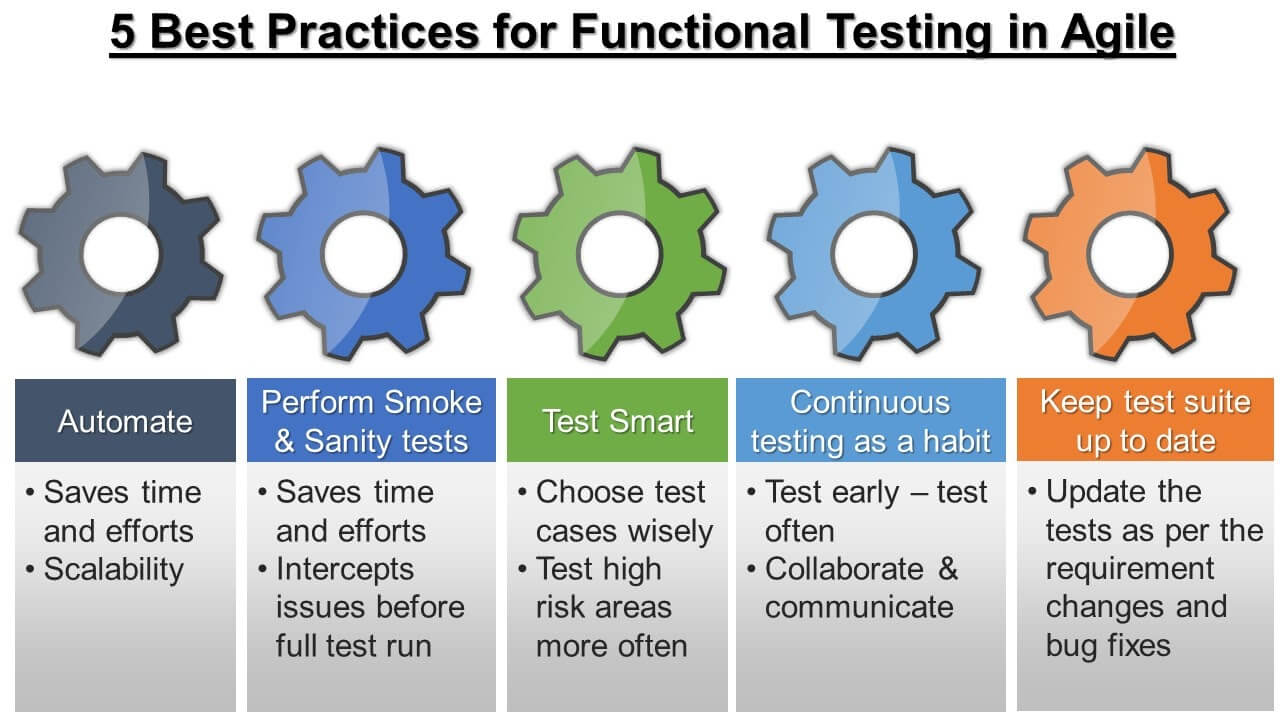Why Functional testing?
What is functional testing?
This type of testing is critical because it verifies that the software meets the functional requirements specified by the customer. Functional testing involves various techniques, including black-box testing, white-box testing, and grey-box testing, and it can be performed manually or using automated testing tools.
What are the various types?
- Unit Testing
- Integration Testing
- Smoke Testing
- Sanity Testing
- Regression Testing
- User Acceptance Testing
The common types of Functional testing are defined below:
Unit testing
should start at the very beginning to assure that each block of code/unit performs its intended manipulation of inputs into desired outputs for the next module. Tests an individual unit/component of the software to validate that each unit performs as designed.
Takes multiple individual units/components of the software and tests them as a group to ensure that the unit modules connect as expected and convey data and commands throughout the system per the specifications built.
Smoke testing
Smoke testing is a subset of test cases that tests the major/critical functionalities of software in a non-comprehensive manner to ensure the software works well enough to move on to additional tests. Execute before any detailed functional or regression tests are performed on the software build.
After receiving a software build, verify that minor changes and fixes applied to the code body do not have unexpected side effects in separate parts of the system and confirm that the bugs have been fixed. If sanity tests fail, the build will be rejected to save the time and costs involved in more rigorous testing.
Verify that the later feature additions and bug fixes(due to which code changes) do not adversely affect existing features.
Regression Testing
Regression testing is nothing but the complete or partial selection of already executed test cases that are re-executed to ensure existing functionalities work fine.
This is the last step before software goes live; user acceptance tests ensure it can handle required tasks in Real- World scenarios, according to specifications. End users typically perform these tests during the Beta testing period.
Process of Functional Testing:
The functional testing process typically involves the following steps:
- Test Planning: In this phase, the testing team identifies the application’s requirements and functionalities and creates a testing plan.
- Test Case Design: In this phase, the team creates test cases that cover all the features and functionalities of the application, including edge cases.
- Test Execution: In this phase, the team executes the test cases, records the results, and reports any defects found.
- Defect Reporting and Retesting: In this phase, the team reports any defects found during the testing and works with the development team to fix the issues. The team then retests the application to ensure that the issues have been resolved.
- Regression Testing: In this phase, the team performs regression testing to ensure that the new features and functionalities do not break the existing functionalities.
In conclusion, functional testing is an essential stage in software development that helps to ensure that the software meets the functional requirements specified by the customer.
It helps to identify defects and errors in the software, improves its quality, and ensures that it is user-friendly
What are the benefits?
Functional Testing has the following Benefits -
- It ensures that the customer or end-user is satisfied.
- It produces a defect-free product/software.
- It ensures the all the requirements should be met.
- It ensures the proper working of all the functionalities of an application/software/product.
- It ensures that the software/product works as expected.
- It ensures security and safety.
- It improves the quality of the product.
- The risks and losses associated with the product/software are reduced.
Best practices
- Product analysis and Test plan
- Having Unit tests. Each software component is safe to modify because of test coverage.
- Maintain End-to-end automated tests. Automated use case scenarios protect releases from possible regressions.
- Load/stress testing allows us to check how the app survives under significant loads.
- Functional testing. Each newly developed feature is covered with test documentation
- and tested progressively.
- User acceptance testing (UAT). Part of our process is to get early feedback from the customer's team.
- Regression testing cycles. We thoroughly test each build to protect it from
- possible regressions.
- Test management system (TMS). We use TMS for Jira for test cases, test planning
- and test cycle execution tracking.
- Bug tracking and health-check services.








An excellent read! Ensure your website's security with 5 Data INC’s USA-based web security testing services, tailored to detect and resolve vulnerabilities. Web security testing
ReplyDeleteFunctional testing
This is a well-explained breakdown of functional and non-functional testing! WhileFunctional Testing Services services focus on verifying that the software works as per requirements, non-functional testing ensures performance, usability, and reliability. Both are essential for delivering a high-quality product. Understanding their differences helps teams prioritize testing efforts effectively. Thanks for sharing this informative piece!
ReplyDeleteVery insightful! I agree that app performance across multiple devices is key, and 5DataInc’s Compatibility Testing Services in the USA sound impressive. Compatability Testing
ReplyDelete